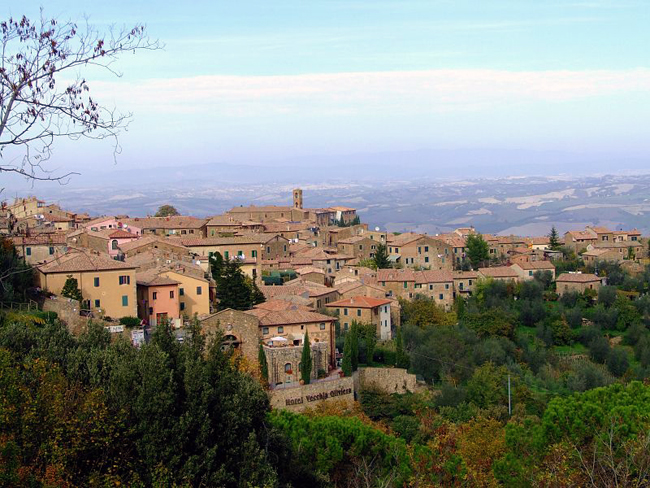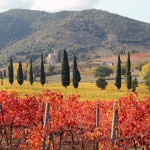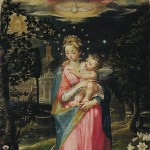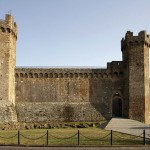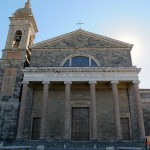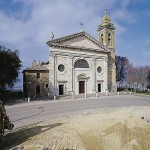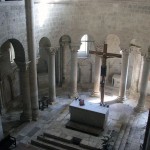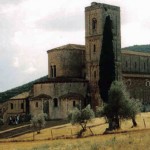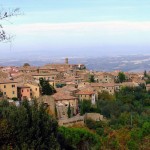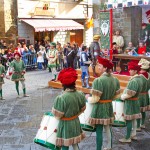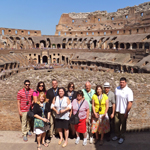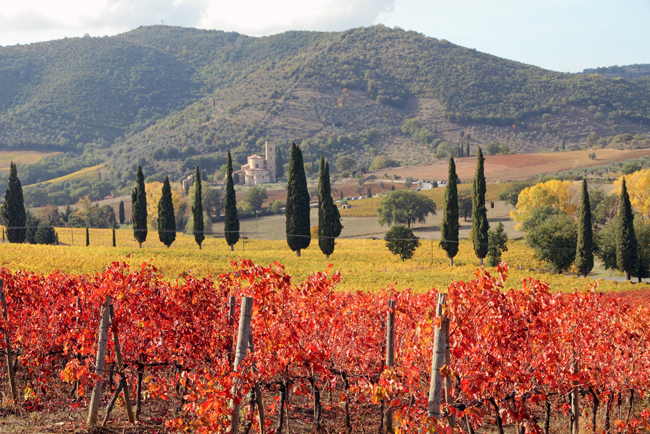 Introduction
IntroductionMontalcino is a charming hill town near Siena that is mostly known for its locally-produced wine, the Brunello di Montalcino. Its high elevation offers visitors stunning panoramas of the surrounding valleys, as well as that of the lovely orchards and vineyards directly below.
This picturesque town has a long history which dates as far back as the Etruscan era. The first mention of it appears in documents from 814 AD which suggest that a church from the 9th century was already in place by the time that the documents were written. It is suggested that this church was built by the monks from the nearby Sant’Antimo Abbey, and that in the 10th century, the local population spiked as the people from the nearby town of Roselle were fled and settled in Montalcino. During the medieval era, Montalcino was known for its tanneries and leatherworking, and the town’s artisans produced high-quality leather items.
Despite being known nowadays as a quiet getaway in the countryside, Montalcino was actually once an independent commune and an
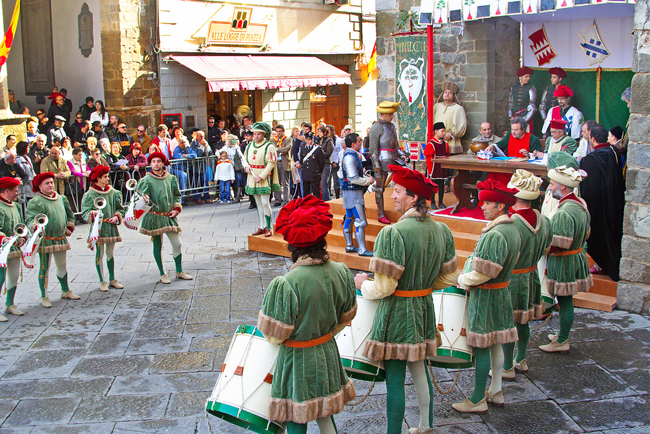 important location for trade because of its favorable position along the Via Francigena which served as the main thoroughfare between Rome and France at the time. Over the years, however, it came under the control of the larger city of Siena and it was eventually considered as more of a satellite town.
important location for trade because of its favorable position along the Via Francigena which served as the main thoroughfare between Rome and France at the time. Over the years, however, it came under the control of the larger city of Siena and it was eventually considered as more of a satellite town.While Montalcino enjoyed the benefits that a prosperous city such as Siena could offer to its allies, this also meant that they would become involved in any confrontation that the city may be embroiled in. Of particular note would be the tensions between Siena and Florence in the 14th and 15th centuries which plunged Montalcino directly into the fray, up until Florence’s powerful Medici family finally conquered Siena in 1555. It is said that despite the fact that Siena has already fallen under Medici rule, Montalcino resisted for another four years before finally succumbing to the pressure.
Nowadays, the citizens of Montalcino celebrate that age by holding a festival twice a year where participants dress up in Medieval costumes, and each of the city’s four quarters or contrade, are represented by their respective lords and ladies. These “nobles” then oversee an archery contest and each the people of each contrade cheers for their representatives.
What to See
Wines
If you’re going to be in Montalcino, make sure to at least be able to try their world-famous wine, or at least go on a wine tour! The Brunello di Montalcino is made from the locally-grown sangiovese grosso grapes, and is known for being the first type of wine to be granted the appellation Denominazione di Origine Controllata e Garantita (or DOCG) by the Italian government, which is basically a seal of approval and a guarantee that the product was produced on site, and that it was done so according to the highest standards. Brunello di Montalcino wine must be aged five years before it can be sold, while its Riserva version requires at least six years.
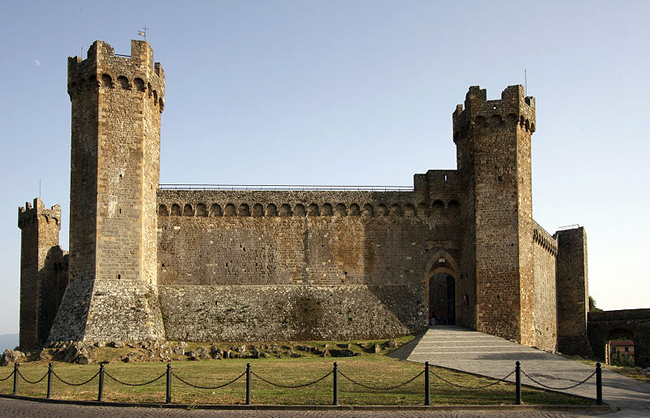 Other than the Brunello, there’s also the Rosso di Montalcino (DOC) which is aged for one year, the various “Super Tuscan” which are equally wonderful, and the Moscadello sweet white wines.
Other than the Brunello, there’s also the Rosso di Montalcino (DOC) which is aged for one year, the various “Super Tuscan” which are equally wonderful, and the Moscadello sweet white wines.The Fortress
Montalcino is primarily a medieval town, and as such, is actually a fortified location and is surrounded by walls. These 13th century medieval fortifications remain prominent sights to this day, and visitors can still walk along some of its ramparts. The fortress itself is built at the highest point within the town in order for guards to have the best view possible of the surrounding areas. It was designed by some of Siena’s best architects of the time, Domenico di Feo and Mino Foresi, who laid everything out in a pentagonal shape while also incorporating existing structures such as the San Giovanni tower, the keep of Santo Martini, as well as an ancient basilica that soon served as the fortress chapel. The Fortress’ claim to fame
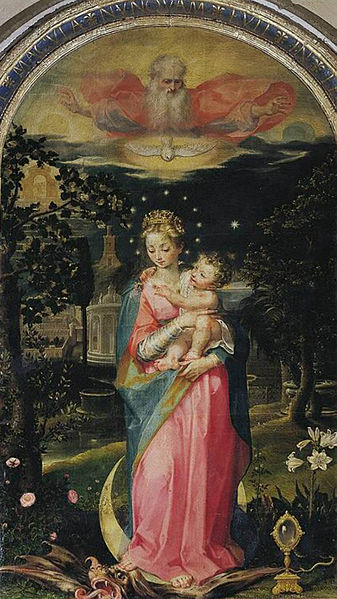 would be that though Montalcino was conquered at several points, the fortress itself has never fallen, and the invading forces have never been able to claim it.
would be that though Montalcino was conquered at several points, the fortress itself has never fallen, and the invading forces have never been able to claim it.Musei Riuniti
Montalcino’s local civic and diocesan museum, this institution currently occupies a building that used to be a convent several centuries ago. Its collection includes many pieces of art from Sienese artists of the 15th century onwards. There are beautiful wooden and terracotta sculptures as well as paintings and other artwork. The museum also sometimes holds exhibits that feature contemporary art, so be sure to check its schedule to see if there are any special programs on the day of your visit.
Chiesa di Sant’Agostino
Right beside the Musei Riuniti is the 13th century Church of Sant’Agostino with its simple façade that is done in the Gothic-Romanesque style. It has lovely rose windows and is known for its 14th century frescoes within that were created by Sienese artists. Many of the frescoes depict various religious scenes from the life of Christ, including the Scourging of Christ, as well as scenes from the Passion of Christ.
Duomo di Montalcino
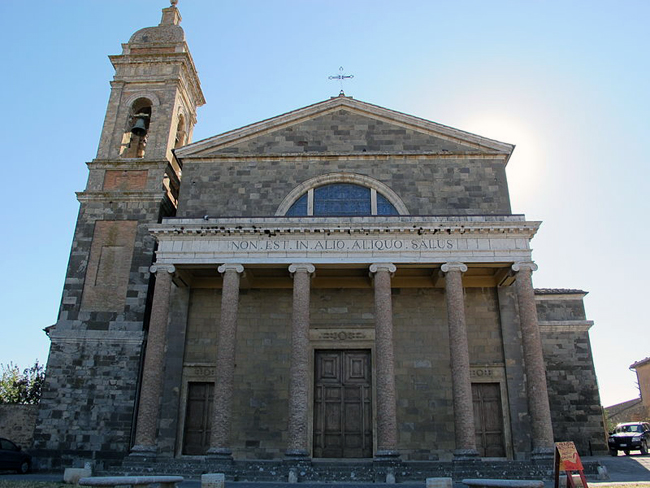 Originally built around the year 1000, what was once a simple church dedicated to San Salvatore achieved cathedral status during the 14th century and thus became Montalcino’s main place of worship. Unfortunately, the façade that it now has is completely different from the one it had when it was first built, mostly due to extensive renovation during the 19th century, which resulted in a more neo-classical look.
Originally built around the year 1000, what was once a simple church dedicated to San Salvatore achieved cathedral status during the 14th century and thus became Montalcino’s main place of worship. Unfortunately, the façade that it now has is completely different from the one it had when it was first built, mostly due to extensive renovation during the 19th century, which resulted in a more neo-classical look.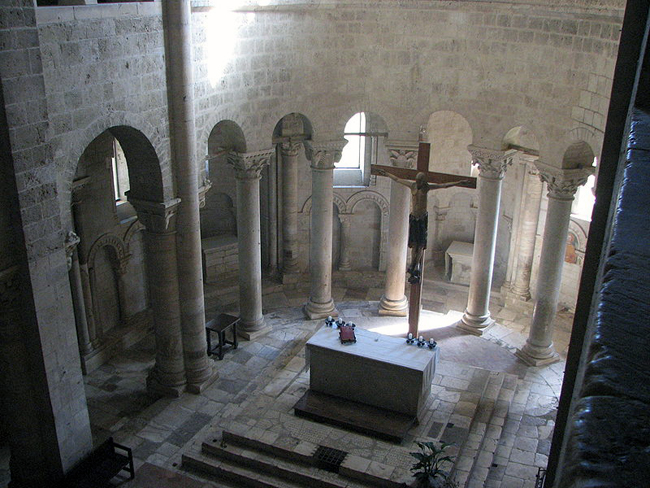 Within the Duomo can be found various works of art, most notable of which would be the Immaculate Conception with Jesus and God the Father and Saint John the Baptist in the Desert painted by Francesco Vanni of Siena. There are also paintings by Francesco Nasini, as well as reassembled fragments of an 11th century sculpture depicting Christ and two angels.
Within the Duomo can be found various works of art, most notable of which would be the Immaculate Conception with Jesus and God the Father and Saint John the Baptist in the Desert painted by Francesco Vanni of Siena. There are also paintings by Francesco Nasini, as well as reassembled fragments of an 11th century sculpture depicting Christ and two angels.Palazzo Comunale
Located at the Piazza della Principessa Margherita, the Palazzo Comunale is the primary building in the area. What currently serves as the town hall is a 13th century structure once known as the Palazzo dei Priori. This palazzo proudly displays the coats of arms of the Podesta family who once governed Montalcino. The palazzo comes with a tall medieval tower, while nearby can also be found the arched building called La Loggia which dates back to the Renaissance era.
Other Sights
- Sant’Antimo Abbey
- Badia Ardenga
- Pieve dei Santi Biagio e Donato
- Pieve dei Santi Filippo e Giacomo
- Chiesa di San Michele
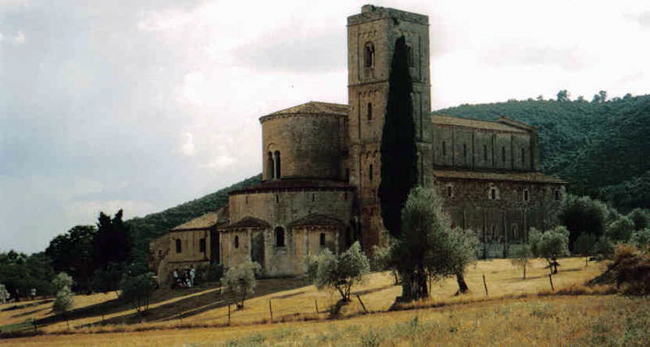 Convento dell’Osservanza
Convento dell’Osservanza- Chiesa dei Bianchi
- Chiesa del Corpus Domini
- Chiesa della Madonna del Soccorso
- Chiesa di San Francesco
- Chiesa di San Lorenzo in San Pietro
- Chiesa di Sant’Agostino
- Chiesa di Sant’Antonio abate
- Chiesa di Sant’Egidio
- Chiesa di Santa Croce
- Chiesa di Santa Maria delle Grazie
- Former Hospital of Santa Maria della Croce
- Parish of St. Sigismund in Poggio alle Mura
- Church of Our Lady of Mercy
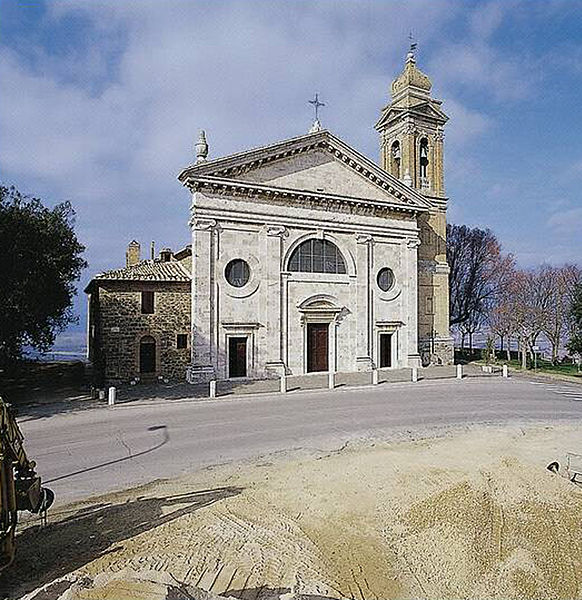 Parish of St. Michael the Archangel
Parish of St. Michael the Archangel- Pieve Santa Restituta
- Santa Maria Maddalena in Torrenieri
- Oratory of the Company of San Rocco
Tips and Advice
- If you want to take amazing panoramic photos of the area, one of the best places to do so would be up the fortress battlements.
- Take it slow. Montalcino is a peaceful, quiet town, so there’s no point of trying to rush everything when you’re there. Match your pace with your surroundings, and just take the time to enjoy yourself and appreciate the fresh air. As such, make sure you make room in your itinerary for long, relaxing strolls down the city’s streets.
- When venturing beyond the walls and into the many orchards and vineyards nearby, make sure to wear comfortable footwear, and bring a good map or GPS with you.
- If you’re looking for wineries to visit, there are many guided wine tours available. However, there are also wineries who don’t even have a sign and you will have to walk up to it, and ask for yourself if you can visit, tour the premises, and/or sample their wares.
- If you happen to find one of these places, be aware that these are normally family-run establishments that are not equipped for regularly receiving tourists, and the people you encounter here are most likely very busy with their chores and with taking care of their crops. Because of this, don’t be surprised if they refuse to receive you, particularly during the autumn season when everyone is expected to help with the harvest. On the other hand, if they agree to entertain you and you set an appointment, make sure to keep that appointment, and once you’re there, to be respectful. Remember that they are making time for you despite the demands of maintaining their crops, so be appreciative of that.
